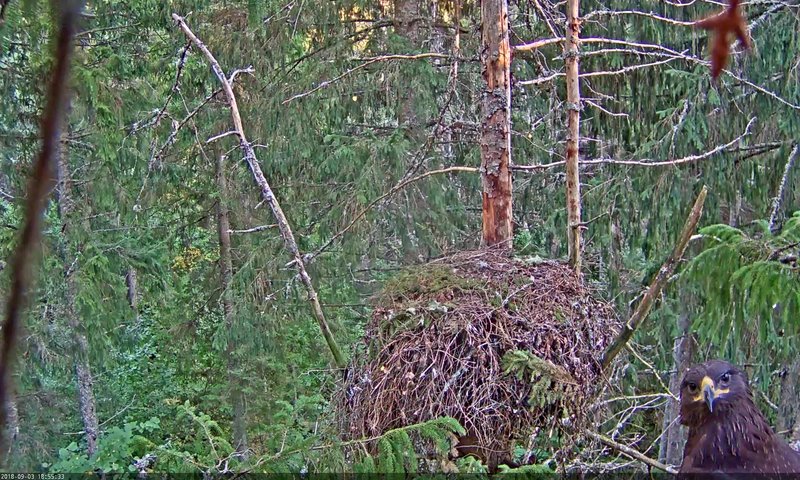Screenshot from webcam Felis silvestris, LK forum
English translation Liis
Estonian text posted 12.09.2018
Tõnnipoeg
Greater spotted eagle Suur-konnakotkas Clanga clanga
Tõnnipoeg is three and a half months old and rarely visits the nest if at all. The nest life period has come to an end.
The parents raised Tõnnipoeg and taught the necessary knowledge for eagle life. Mother Tiiu should set out on migration in the second half of September. Father Tõnn stays to keep an eye on Tõnnipoeg and we can still meet them a month after Tiiu’s migration. With favourable weather they start the migration earlier.
Where do spotted eagles spend the winter?
Our greater spotted eagle Tõnn who was hatched in Lääne county and who has a transmitter has wintered in southern
The migration of spotted eagles continues. The exteriors of the greater and lesser spotted eagles are rather similar and it is known that they also form fertile mixed pairs. The wing span of spotted eagles is between 130 -
The number of lesser spotted eagles is estimated at up to six hundred breeding pairs in
Whom can we mistake for spotted eagles in a flight view?
An experienced observer distinguishes a spotted eagle from the similar buzzard even at a distance from the flight silhouette. A spotted eagle keeps the tips of the wings mostly downturned when in gliding flight, a buzzard as a rule upwards-turned. Should you happen to see the bird closer for observation much white may be seen in the buzzard’s plumage while a spotted eagle’s plumage is uniformly brown and there is white in it only as solitary spots, somewhat more for juveniles.
The season is ending. Our thanks to the Kotkaklubi (Eagle club), the LK forum and of course all interested watchers!



